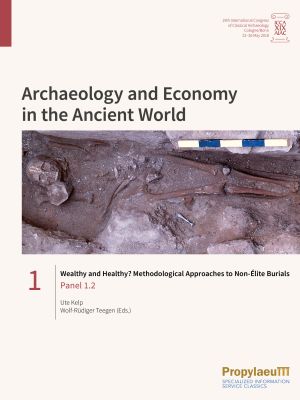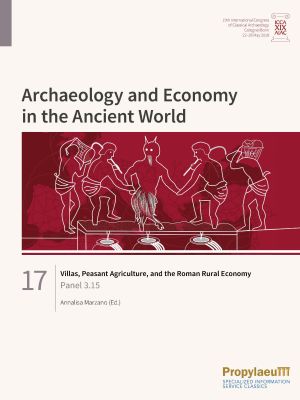Busana, Maria Stella
Wealthy and Healthy? Methodological Approaches to Non-Élite Burials: Panel 1.2
The analysis of ancient societies beyond the political system, leading actors, and élite groups relies heavily on the archaeological record. Abundantly preserved burial sites present a major part of ancient testimonies. Yet, neither are burials with their grave goods a mirror of past lives nor do non-élite burials necessarily equal poor burials, and we need a mixture of criteria to identify non-élite as well as non-poor burials. The bones of the deceased are, however, first class bio-historical sources. There is a strong correlation between wealth and health in antiquity and human remains reflect the social status via diet and health.
With respect to various methodological approaches to funerary archaeology linking the capacities of material culture studies to social and natural sciences, the contributions in this volume explore the relationship between material culture, health and social status. They evaluate non-élite burials regarding the social persona and life style of the deceased as much as the ideology of the descendants expressing their beliefs through the burial process. Precisely the focus on context analysis – aiming beyond the funerary sphere – constitutes the importance of the case studies united in this volume.
Villas, Peasant Agriculture, and the Roman Rural Economy: Panel 3.15
The Roman villa was a defining element of the Roman world and its appearance and spread, both in various regions of Roman Italy and abroad, have been linked to various historical phenomena: Rome’s territorial expansion, the establishment of colonial settlements, and the indigenous elites’ readiness to participate in forms of Roman life. While traditional historiography has seen the spread of large villas in Republican Italy as a phenomenon that displaced small and medium landowners from the land, and thus contributed to Rome’s socio-political problems, recent studies have stressed that large villas and farms were not at variance with each other. The papers gathered in this volume aim at giving a more organic evaluation of how the ‘villa economy’ and the ‘peasant economy’ operated, and to what degree, if any, the two were integrated. It does so by addressing two main questions: whether villas and small and medium farms were part of two distinctive productive and distributive systems or not; and to what extent the picture emerging from provincial territories compares with the situation in Roman Italy.








